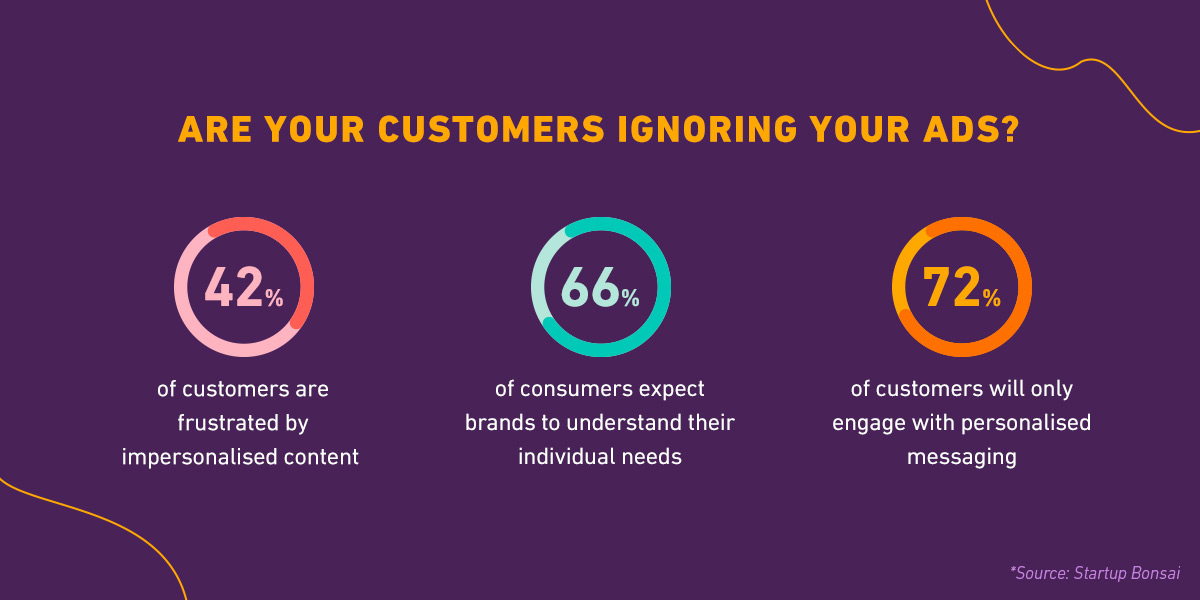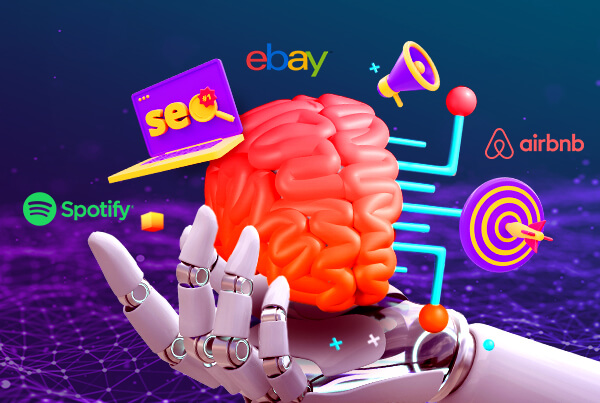
Your ad campaigns are underperforming; you’re not getting the click-throughs or conversions you’re expecting.
Ad-blindness might be one reason, but it’s a commonly cited frustration without a clear next step to guide improvement. Here, we’ve compiled 5 other not-so-obvious reasons why your target audience could be ignoring your ads.
1. You’re not personalising enough (or at all)
If your content isn’t resonating with your consumer, you risk losing them. Your messaging, key visuals, call-to-action, language, and so on, each need to be tailored to your consumers’ needs and demands.
Statistics1 show:
- 66% of consumers expect brands to understand their individual needs
- 42% of customers are frustrated by impersonalised content
- 72% of customers will only engage with personalised messaging
In short, deeply understanding your consumer and personalising the ad experience is key to standing out in a cluttered ad space.
2. You’re not aligning your ads to the channel
Consumers have varying expectations depending on the platform and are primed to respond differently.
A user would engage with videos differently on TikTok compared to YouTube. Likewise, someone on Google search is going to seek information and an experience that is different compared to Facebook.
To better align ads to the channel:
- Fit your visual storytelling to the platform for the best possible user experience.
Eg. Someone who is willing to sit through a 2 minute ad on YouTube will not do the same on Instagram. - Adapt your elements to the platform.
A call-to-action on Instagram Stories should take advantage of native features while a CTA on Twitter should be optimised for skimming. - Adjust sizing to the platform.
Instagram’s users respond best to images in portrait mode because they tend to scroll vertically when on mobile.
These platforms have done the necessary research to hook their audience and keep them interested. Don’t reinvent the wheel, take advantage of it.
3. You’re not on the channels your audience is on
Sound obvious? It’s less so in practice. By assuming your audience is not on a platform, you’re missing out on a group of potential customers.
In fact, your ad could be exactly what they need; there is simply no way to be certain of it without testing it out on that specific platform and gathering information from their responses.
4. You’re not making use of creative & copywriting
Copywriting is essential. Without it, customer data can’t be translated into emotionally-triggering language and you’ll find your consumer captured by a different ad.
But how do you know it’s the right copy? You test it with multiple ad variations. By changing specific elements of your ads — your visuals, design, and copywriting — you get to find out just what makes your customer tick.
5. You’re fusing branding with lead generation ads

One ad does not fit all. Lead generation and branding campaigns fundamentally do different things. Even if they’re targeting the same audience. While the former is about selling products or services, the latter is all about creating lasting impressions and retaining mindshare.2
Rather than aim to have one ad do everything, it is ideal to segment them according to your audience. A fresh potential customer needs to know why they should buy from you, versus a ready-to-buy consumer who you could tempt with promotions or discount codes.
By recognising what consumers are seeking at their stage of the buying journey, you’re better able to personalise their experience.
Conclusion
Paid ads come in all shapes and sizes. The key to making your ads really work is to understand your consumer, tailor your ad assets to their needs, and finally test it out. By leveraging personalisation tools to help you test your ads, you’ll gain better insights and be able to optimise your campaign for improved performance.
Get in touch to personalise your next ad campaign.










